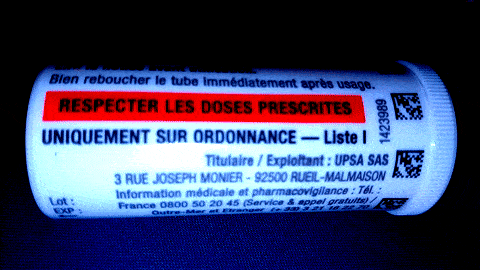







1
A. Context
Harm reduction has been widely introduced
as a public health policy concept in the 1980s
in the context of the HIV epidemic and has
been utilized constructively in the context of
global responses to preventing the
transmission of HIV and other bloodborne
diseases among people who inject drugs.
Over the past three decades, measures under
the umbrella of harm reduction have
expanded. Today, these measures go beyond
the scope of HIV prevention and care and
beyond merely reducing harms associated
with injecting drug use. Many governments
have incorporated a range of interventions
into their respective national drug strategies.
Already in its 2009 discussion paper, UNODC
pointed to the fact that harm reduction is
often made an unnecessarily controversial
issue as if there was a contradiction between
prevention and treatment on one hand and
reducing the adverse health and social
consequences of drug use on the other.1
Ideological leanings, corporate mandates,
intended use, national situation and priorities
have all played a role. The controversy has
been exacerbated by the linking of the term
harm reduction with legalization in some
instances.
UNODC has been working with Member
States and partner organizations for over two
decades to develop and improve national
health responses to non-medical use of
controlled substances. The response includes
evidence-based drug prevention programmes,
drug treatment and care services and harm
reduction interventions. Within its mandate,
UNODC’s harm reduction work focuses on
minimizing the adverse health and social
consequences of drug use2 such as
substances use disorders, HIV/AIDS,
hepatitis, other infectious diseases, and
overdose.
Harm reduction can be contextualized. This
paper notes harm reduction as an integral
part of a comprehensive health response to
non-medical use of controlled substances,
embedded in a recovery-oriented continuum
of care.
In that context, and within the scope of
applicable international legal framework on
drugs, harm reduction measures save lives
and improve health outcomes for the
individuals, families, and population at large.
As such, the full recovery-oriented continuum
of care should be evidence-based, available,
accessible, and affordable to all people who
use drugs and with drug use disorders.
B. Harm reduction and
international drug policy
commitments
State Parties to the Single Convention
of 1961 as amended and those to the 1971
Convention are required to give special
attention to and take all practicable measures
for the prevention of abuse of narcotic drugs
and psychotropic substances and for the early
identification, treatment, education,
after-care, rehabilitation, and social
reintegration.3
Harm Reduction
Policy Note
November 2024
2
Since 2009, governments have agreed on
commitments to work towards reducing
harms associated with drug abuse in all major
policy documents.
In the 2009 Political Declaration, Member
States’s action was to develop, review and
strengthen comprehensive and integrated
demand reduction policies and programmes,
aimed at promoting health and social well-
being among individuals, communities and
families and reducing the adverse
consequences of drug abuse for individuals
and a society as a whole.4
This commitment was reaffirmed in the
outcome document of the 2016 UN General
Assembly special session on the world drug
problem and subsequently in the 2019
Ministerial Declaration5 as well as the high-
level declaration on the 2024 midterm review6.
The need to scale up public health actions to
improve access to and quality of treatment
has been included also in the 2030 Agenda for
Sustainable Development. Target 3.5 of UN
sustainable development goal 3 sets out a
commitment by governments to strengthen
the prevention and treatment of substance
abuse, in addition to target 3.3 referring to
ending the AIDS epidemic and combating viral
hepatitis, target 3.4 on preventing and treating
non-communicable diseases and promoting
mental health, target 3.8 on achieving
universal health coverage and target 3b with
its reference to providing access to affordable
essential medicines.7
In the United Nations system common
position supporting the implementation of the
international drug control policy through
effective inter-agency collaboration commits
to stepping up joint efforts and supporting
each other in the promotion of ‘increased
investment in measures aimed at minimizing
the adverse public health consequences of
drug abuse, sometimes referred to as harm
reduction, which reduce new HIV infections,
improve health outcomes and deliver broader
social benefits by reducing pressure on
health-care and criminal justice systems’.8
The term “harm reduction” was used for the
first time in a parliamentary document in
resolution 67/4 entitled “Preventing and
responding to drug overdose through
prevention, treatment, care and recovery
measures, as well as other public health
interventions, to address the harms
associated with illicit drug use as part of a
balanced, comprehensive, scientific evidence-
based approach” which was adopted by vote
at the 67th session of the CND in March 2024.
“Harm reduction” was used in the context of
encouraging innovative approaches and
measures aimed at minimizing the adverse
public health and social consequences of the
non-medical use of drugs, including the
prevention and response to drug overdoses.
C. Risk of harms
associated with drug use
The three international drug conventions have
been concluded out of concern of the
international community for the health and
welfare of humankind, and for the public
health and social problems that result from
the non-medical use of controlled
substances, while being cognizant of the
importance these substances play in medical
and scientific fields.
It is with that in mind that the World Health
Organization has been mandated by the
conventions to review narcotic drugs and
psychotropic substances for their potential to
cause harm to one’s health, with the ultimate
decision-making power on the control status
of each substance vested in governments
who are members of the Commission on
Narcotic Drugs.9
The use of narcotic drugs and psychotropic
substances outside of the medical context
and/or without medical supervision is
associated with significant risks of health-
related harms.
According to the 2024 World Drug Report, 1 in
18 people worldwide are estimated to have
used a drug at least once in 2022. That same
year, 1 in 81 people worldwide were suffering
from a drug use disorder and out of those,
only about 1 in 11 received drug treatment
globally.
Single or infrequent use bears the risk of
adverse or fatal outcomes, including due to
adverse reaction to the substance or its
adulterants, overdose, or accidents. At the
same time, it is estimated that at least 8% of
3
individuals who start using drugs will develop
a drug use disorder over time10. Drug use
disorders include harmful pattern of use and
drug dependence, which has been recognized
as a complex multifactorial health disorder
that often takes the course of a chronic and
relapsing disorder11.
When left untreated, drug use disorders
increase morbidity and mortality risks for
individuals and can trigger or increase
existing substantial suffering and impairment
in personal, family, social, educational,
occupational or other important areas of
functioning. They are associated with
significant costs to society due to premature
mortality, increased health care and social
welfare expenditure, lost productivity, and
costs related to criminal justice. There is an
increased risk of fatal overdose, but also
cardiovascular and liver problems, mental
health disorders co-morbidities, violence and
suicides.12
In addition, people who inject drugs are
exposed to additional series of risks,
including, but not limited to, blood-borne
infections such as HIV or hepatitis C virus
(e.g. due to the sharing of blood-
contaminated injection equipment).13
In 2022, out of all people who used drugs, an
estimated 4.7 per cent injected drugs (13.9
million), with 2 per cent living with hepatitis C
(6.8 million) and 0.6 per cent with HIV (1.6
million).
Preventing drug use
As described above, any internationally
controlled substance used outside of
medical setting in any form or way carries
the risk of health-related harms and other
negative consequences. The most effective
way to avoid any risk of harm associated
with non-medical use of controlled
substances is to prevent or delay initiation
and consumption of drugs in the first place.
In broader terms, drug use prevention aims
to ensure the healthy and safe development
of children and youth and the health and
wellbeing of adults. Effective prevention
contributes significantly to the positive
engagement with their families and in their
schools, workplaces and communities.
Drug use prevention, when based on
evidence, is effective and represents a long-
term investment in the overall health and
wellbeing of peoples of all ages, respecting,
protecting and promoting their human rights
and overall welfare.
However, in view of the complexities of the
world drug problem, and as in the case of
any health disorder, no effective prevention
intervention, policy or system can be
developed or implemented in isolation.
Subsequently, local and national prevention
systems should be embedded and
integrated in a comprehensive, balanced and
health-centred system, which includes also
recovery-oriented treatment of drug use
disorders, while at the same time making
effort to reduce harms associated with non-
medical use of controlled substances, and
includes law enforcement and supply
reduction.14
D. Responding to drug
use and reducing harms
The international drug conventions do not use
the term “harm reduction”. Instead, the 1988
Convention obliges State Parties to adopt
appropriate measures aimed at eliminating or
reducing illicit demand for narcotic drugs and
psychotropic substances, with a view to
reducing human suffering […] 15
Drug use prevention focuses on people who
have not initiated drug use. Addressing
harmful drug use or dependence for those
who have already initiated the use of drugs is
the primary goal of treatment of drug use
disorders in a continuum of care.
Because drug use disorders often take the
course of a chronic and relapsing disorder,
services need to be prepared to work with
patients over the long term – often, but not
always, for years and sometimes during a
patient’s entire life – maintaining contact,
offering crisis interventions and support when
needed and at different levels of intensity16,
yet always with a view to the highest
4
attainable standards of health and patient
autonomy.
Under the recovery-oriented continuum of
care, harm reduction measures are needed for
people who use drugs who for various
reasons are currently not able to stop the use
of drugs, despite being exposed to the various
risks of health-related harms. Such measures
may include a range of non-conditional, low-
threshold and evidence-based interventions,
for example access to clean needles for
people injecting drugs, access to emergency
overdose management (including through
take home naloxone programmes) and
provide an important link with evidence-based
treatment of drug use disorders, including
opioid agonist treatment for people with
opioid use disorders.
Sustainable recovery is possible.
Recovery is the ultimate goal at every stage
of the treatment continuum, at every stage
of the disorder and across a variety of
settings: from low threshold outreach
services to intensive inpatient or residential
treatment.
UNODC/WHO International Standards for the Treatment of Drug
Use Disorders, 2020
Implementing a ‘no wrong door’ principle
means that people who use drugs and people
with drug use disorders receive relevant and
non-judgemental support and access to
comprehensive therapeutic interventions
regardless of their entry point in the health or
social system17 and regardless of the initial
health and social needs that bring them in
contact with the support system.
In other words, and at its core, harm
reduction, while protecting people who use
drugs and their families from infectious
diseases and other adverse health and social
consequences through targeted interventions,
can support a crucial voluntary step in the
direction of improved health – with a view to
recovery – offering timely access to evidence-
based and person-centred drug dependence
treatment as well as medical care and
rehabilitation.18
Additionally, harm reduction interventions,
along with and part of the continuum of care
and treatment services, when connected
appropriately to the health care system, may
be cost-effective and can provide early
identification, data and knowledge of the
patterns of drug use and availability of drugs
on the local illicit market.
The International Narcotics Control Board, an
independent body mandated by the
international drug conventions to monitor
compliance of State Parties with the treaties,
acknowledged already in 1993 the importance
of certain aspects of harm reduction as part
of a comprehensive drug demand reduction
strategy, but such programmes should not be
carried out at the expense of other important
activities to reduce the demand for drugs,
such as prevention.19
E. Examples of harm
reduction services
There are various measures that have been
implemented in different regions and
countries and found to be effective in
reducing harms associated with the non-
medical use of drugs, including saving lives of
people who use drugs, especially when
adapted to national and local situations
priorities and cultures, while not increasing
use.
For example, in some countries where opioid
use disorders are the most prevalent, health
systems have implemented psychosocially
assisted pharmacological treatment of opioid
use disorders, such as opioid agonist
maintenance treatment. Opioid agonist
maintenance treatment (OAMT) programs
using methadone and/or buprenorphine have
been found to be effective not only to reduce
drug use and promote recovery, but also to
decrease injection and decrease mortality
both, from natural causes and opioid
overdoses, while at the same time reducing
public health costs. OAMT is a key
intervention recommended by both the
UNODC/WHO International Standards for the
Treatment of Drug Use Disorders, and by the
UNODC/WHO/UNAIDS publications on
preventing HIV/AIDS and other infectious
diseases among people who use drugs20.
5
Needle syringe exchange programmes have
been found in scientific literature to be an
effective tool to address transmission of HIV
infections, hepatitis C and other blood-borne
infections among people who inject drugs,
while not increasing drug use. Additionally,
the WHO-UNODC-UNAIDS Technical guide for
countries to set targets for universal access
to HIV prevention, treatment and care for
injecting drug users outlines a comprehensive
package of nine interventions specifically
aimed at the prevention, treatment and care of
HIV infections among people who inject
drugs.
Finally, countries have been implementing
take-home naloxone programmes which are
proven to be effective in the management of
overdoses and have been recommended by
WHO, while not increasing drug use and with
demonstrated feasibility including in low- and
middle-income countries.21 Additionally, some
countries have also developed naloxone
dispensing programs in community settings,
extending beyond home use.
In many places, the delivery of harm reduction
services is undertaken in community-based
settings and by civil society organizations,
including peer-led organizations.
F. Conclusion
Evidence-based drug use prevention in line
with international standards and consistent
with international law is the most effective
way to avoid any harm associated with drugs
in the first place.
A comprehensive health response requires a
full continuum of care. Harm reduction
interventions encompass measures for
people who use drugs and people with drug
use disorders that have been found by
scientific evidence to effectively prevent,
reduce or minimize the adverse public health
consequences of drug use, as part of a
people-centred and recovery-oriented
continuum of care, thereby reducing drug-
related mortality and morbidity.
Ensuring access to such measures when
tailored to national needs, resources and
priorities as part of a recovery-oriented
continuum of care, can save and improve the
lives of people who use drugs and people with
drug use disorders and can contribute to the
overall health and security of communities at
large. When prioritising and implementing any
such measures, Governments must be
cognizant of their commitments pursuant to
existing international drug conventions, which
require limiting the use of controlled drugs to
medical and scientific purposes only.
The world drug problem is complex, and
challenges posed by drugs have wide-ranging
adverse impacts on security, human rights
and development. The multifaceted nature of
the problem requires a comprehensive and
balanced approach that includes efforts
promoting health, human rights, including
equality and non-discrimination, law
enforcement efforts ensuring people’s
security and sustainable development.
UNODC will continue providing legislative,
policy and technical assistance to implement
strategies that address all the various
challenges associated with drugs.
From a health perspective, UNODC remains
committed to assisting Member States, upon
request, to implement an evidence-based
drug use prevention strategy and put in place
a larger comprehensive and holistic recovery-
oriented continuum of treatment and care
services for people who use drugs and people
with drug use disorders, including harm
reduction measures tailored to specific
circumstances, in line with international law.











